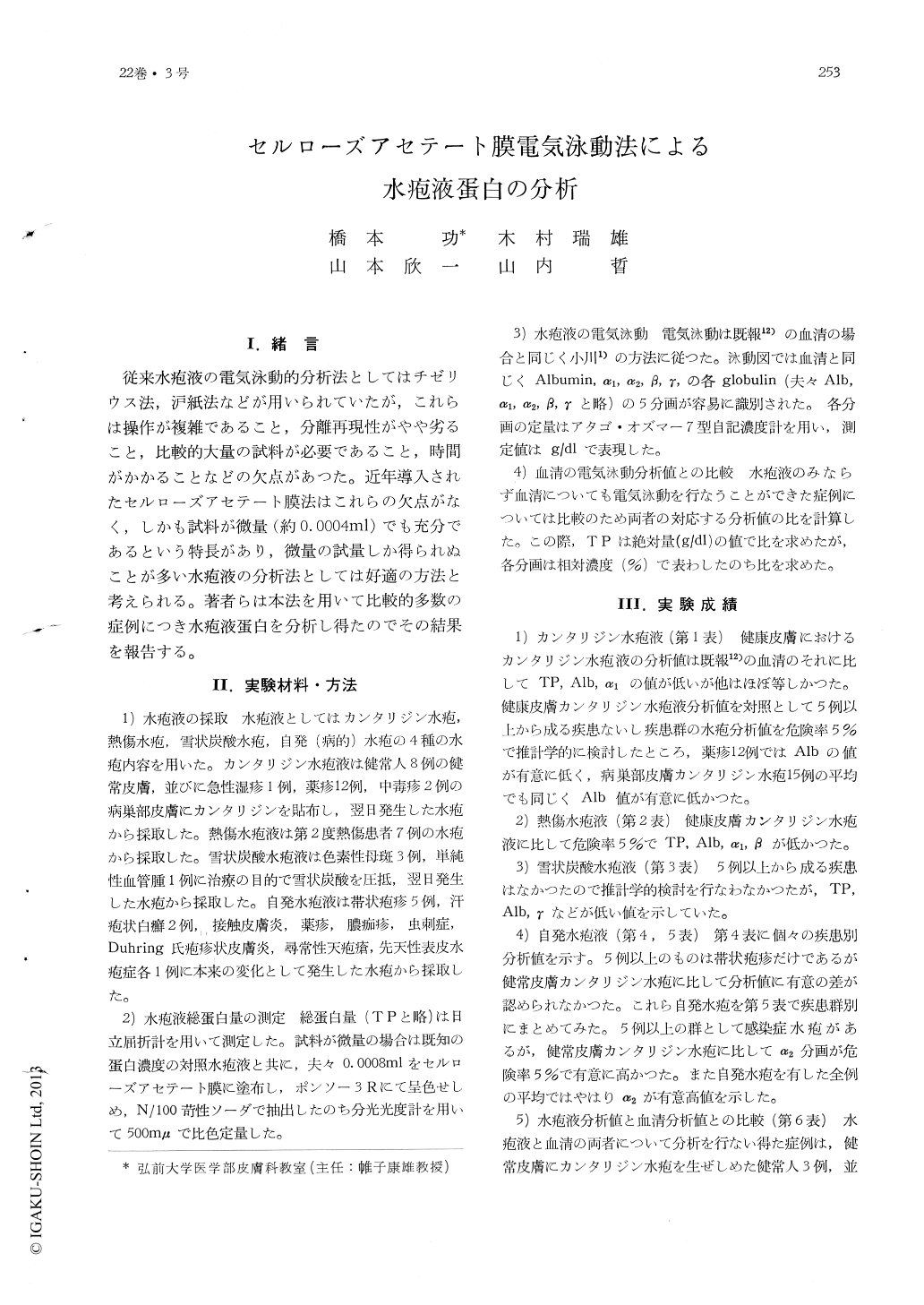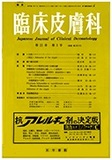Japanese
English
- 有料閲覧
- Abstract 文献概要
- 1ページ目 Look Inside
I.緒言
従来水疱液の電気泳動的分析法としてはチゼリウス法,濾紙法などが用いられていたが,これらは操作が複雑であること,分離再現性がやや劣ること,比較的大量の試料が必要であること,時間がかかることなどの欠点があつた。近年導入されたセルローズアセテート膜法はこれらの欠点がなく,しかも試料が微量(約0.0004ml)でも充分であるという特長があり,微量の試量しか得られぬことが多い水疱液の分析法としては好適の方法と考えられる。著者らは本法を用いて比較的多数の症例につき水疱液蛋白を分析し得たのでその結果を報告する。
1) Estimation of the total protein (TP) level and electrophoretic analysis of the protein fractions were made in 23 cantharidin-induced blisters, 7 combustio blisters, 4 solid carbon dioxide induced blisters and 14 spontaneous (pathologic) blisters. The albumin level was lower in cantharidin bullaes of the skin lesions as compared with cantharidin blisters of the normal skin. The levels of TP, albumin, α1 and β fractions were lower in combustio blisters than in cantharidin blister of normal skin ; TP, albumin and γ levels were lower in solid carbon dioxide blisters ; α2 concentration was significantly higher in spontaneous bullaes. The ratio of the rela-tiue concentration of α1, fraction of the blister fluid to that of the serum was frequently higher in ourpresent study than in the previous papers by others ; this will be explained by the excellent ability of the cellulose acetate membrane electrophoresis to separate the α1 fraction.
2) According to the ratio of TP of the blister fluid to that of the serum, blisters were group-ed into Type H (high exudation), Type L (low exudation) and Type M (middle exudation).On the basis of the ratio of the relative concentrations of each fraction of the blister fluid and those of the serum, blisters were again divided into Type sim (simple exudation), Type sel (selective exudation) and Type int (intermediate exudation). Combining both classification systems, the author made a simple classification obout the blisters. The cantharidin blisters on the normal skin and the insect-bite blisters belong to Type H-sim ; blisters of contact dermatitis and of tinea pedis to Type H-sel ; blisters of pemphigus vulgaris to Type H-int ; herpes zoster blisters to Type L-sel ; blisters of epidermolysis bullosa to Type M-int.

Copyright © 1968, Igaku-Shoin Ltd. All rights reserved.


